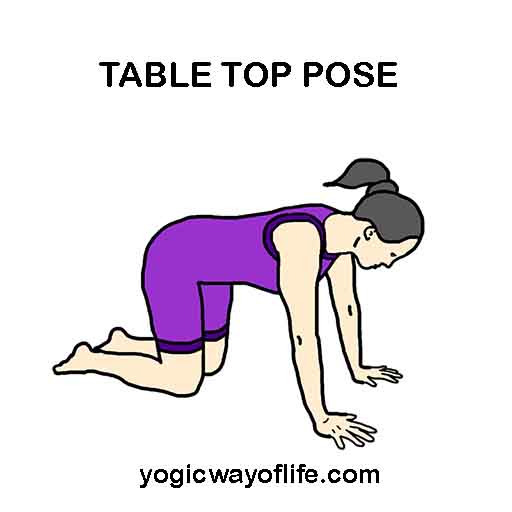Table Top Pose can be used as a starting pose for many other kneeling postures like Marjariasana (Cat pose) and Adho Mukha Svanasa (Downward facing dog pose). It is so called because in the final position, the body is flat on top like a table and is supported by four legs (2 knees and 2 palms).
This is a beginner’s pose and can be done even by children.
How to do Table Top Pose?
- Start by sitting in the kneeling position or Vajrasana.
- Place both your hands in front with palms on floor facing forward.
- Raise yourself up and support yourself on the palms and the knees.
- Adjust and bring the palms under your shoulders.
- Take the tail bone backwards and stretch your neck forwards to make the spine straight.
- Gaze can be on the floor between the palms. Breathe normally in this position. One may also hold the breath for few seconds, if you feel comfortable.
- Maintain this position for as long as you are comfortable.
Benefits of Table Top Pose
- This asana can be a preliminary step or a starting point for other asanas like the cat pose (Marjariasana), the Downward facing dog pose (Adho Mukha Svanasana), Threading the Needle Pose, etc.
- Table Top pose helps to lengthen the spine.
- It re-aligns the spine and removes minor postural defects.
Contraindications for Table Top Pose
- Avoid this pose if you are suffering from injury of knees or wrist.
- If you have pain in the knees while doing this pose, you can use a soft folded blanket under the knees as support.
From this pose, one can move on to the Balancing Table Pose, where the one of the hands along with the leg of the opposite side is raised in the air. That asana gives a good sense of balance.

